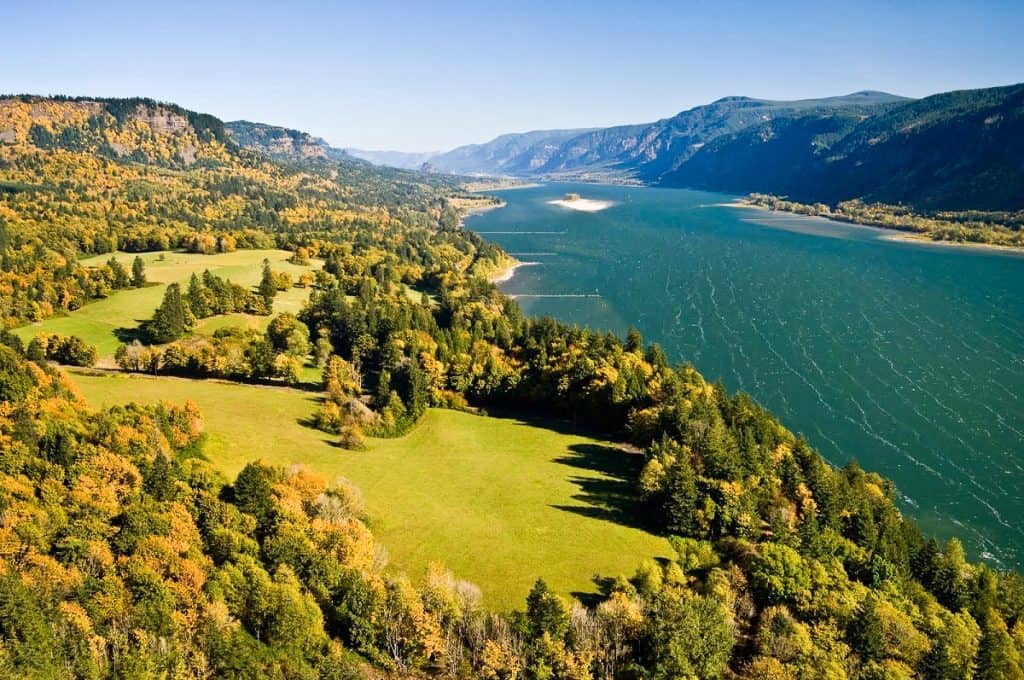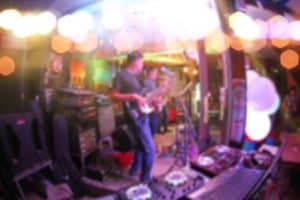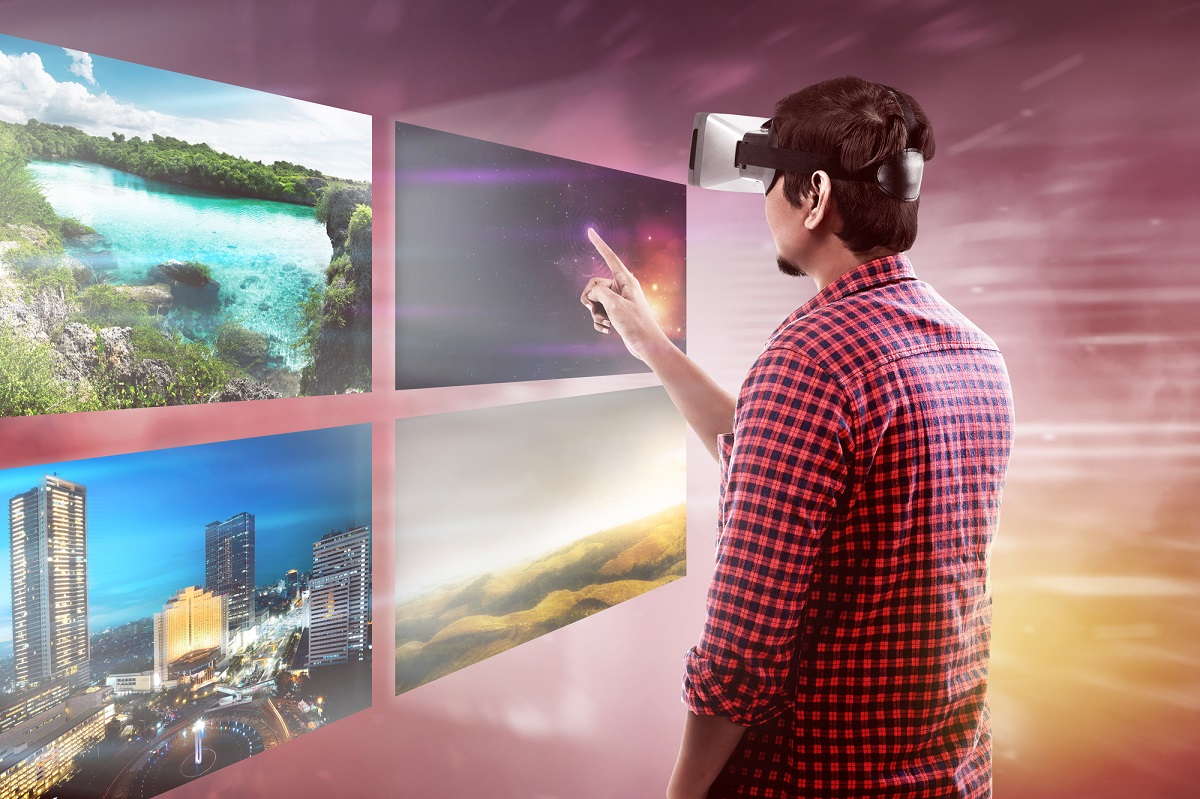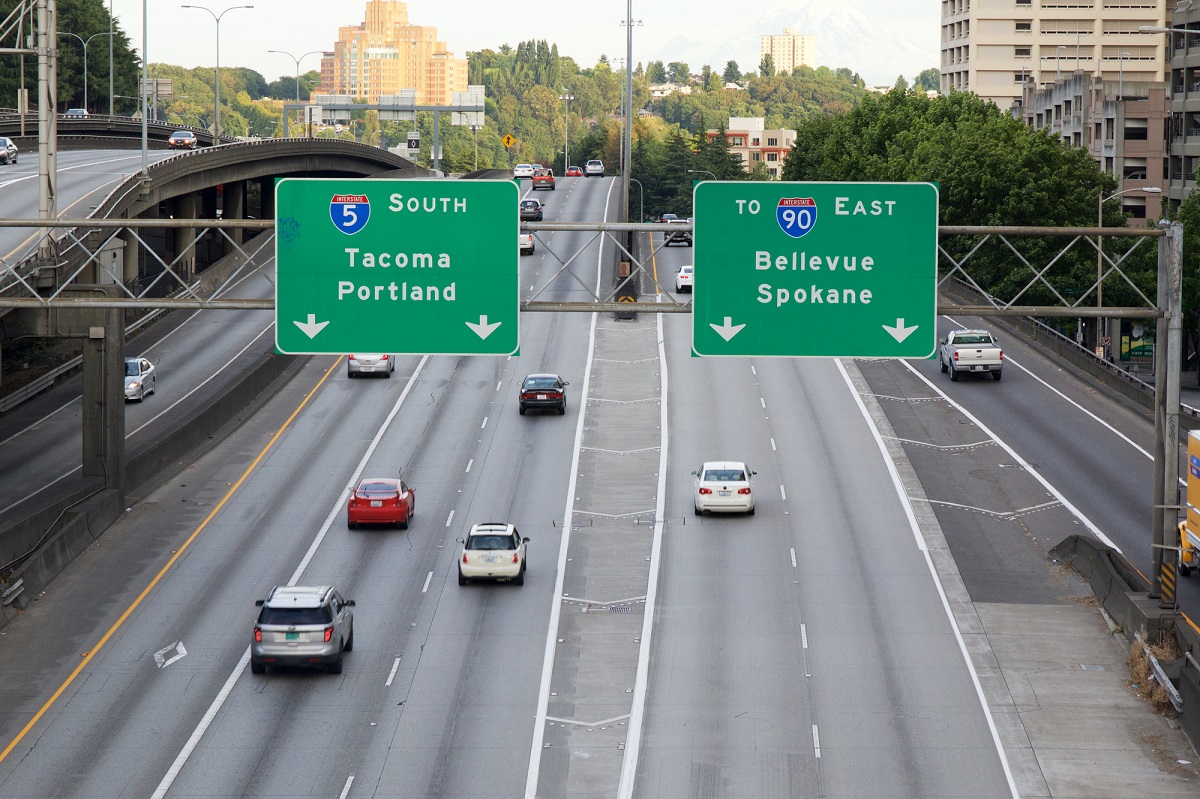The following destinations represent some of the most interesting natural wonders in around Washington State. We’ve grouped them by region. There is a Google map at the end of the article with pinpoints to the various locations.
Some of these make fun day trips, while others require a weekend getaway or longer vacation.

Columbia River Gorge from Cape Horn – U.S. Forest Service photo (public domain)
Western Washington Natural Wonders
Deception Pass State Park is Washington State’s most visited park. Be aware that during the summer months, roads around Deception pass can get very busy. It’s definitley worth the wait and with thousands of acres, there’s plenty for everyone. Tidepooling fans will enjoy some of the best tide-pools in the Pacific Northwest. Hikers will love the dozens of hiking trails. Boaters can visit nearby islands and explore thousands of acres of fresh and saltwater. The Deception Pass Bridge is a sight in and of itself offering views unparalleled to anywhere else in our state. It’s a unique bridge that gives you a view of the brilliant blue waters below. Whales have often been seen passing underneath the bridge as well! Camping is your best best for low-cost accommodations. Whidbey Island and Anacortes both offer budget motels and even a few hostels. This is a popular spot for whale watching tours as well. Make sure to do your research and book in advance to save big bucks on these tours.
Nisqually National Wildlife Refuge (see also Billy Frank Jr. Nisqually National Wildlife Refuge | U.S. Fish & Wildlife Service), restored in 2009 by removing dikes and reconnecting 762 acres with the tides of Puget Sound is the largest estuary restoration project in the Pacific Northwest and an important step in the recovery of Puget Sound. Over 3,000 acres of land offer habitat for thousands of animals. Freshwater and saltwater combine here to provide a climate and habitat unlike anything else. Nisqually is along the migration path for several species of waterfowl making it a popular spot for bird lovers. Crabs, clams, shrimp, and dozens of fish species can be observed here as well. Offering several miles of trails, rivers and lakes for boating, and beautiful scenic overlooks- this is a destination unlike anywhere else in the PNW. Situated on the south end of the sound, this is an easy day trip from Seattle. It’s a wonderful and easy getaway from the city for an urban nature experience. If you want to stay overnight, Olympia offers dozens of low-cost options for places to stay. This is a day-use only park but there are camping options within Olympia and the surrounding area as well.
Mima Mounds Natural Area Preserve (NAP) in Thurston County, near the town of Littlerock, comprises 641 acres of grassland covered mima mounds, forest, and oak woodland. Mima mounds are small, irregularly spaced hills, described by some as “soil pimples”. They are found throughout the landscape around the southern Puget Sound. The NAP offers rare examples of mima mound landforms and Puget prairie grasslands. The Department of Natural Resources, along with a number of partner organizations, is actively restoring parts of the Mima Mounds NAP to enhance conditions for rare plants, butterflies, and birds that inhabit prairie and oak habitats. Mima Mounds NAP has an interpretive trail system including a paved, ADA accessible ½ mile loop, and two longer gravel paths to the north and south of the paved loop. The interpretive center includes full color signs with information on geology, mima mound hypotheses, prairie ecology, fire and Native American use. A Washington State Discover Pass is required for parking at the preserve.
Olympic Peninsula Natural Wonders
Dungeness Spit, Sequim, Washington, the longest natural sand spit in the United States. This is the spot for wildlife viewing. The area was originally set aside as a bird refugee and is still a popular birding spot with over 250 species reported here. Bald eagles and snowy owl are highlights for birding enthusiasts. Orcas make an appearance in the area on occasion as well as seals, and deer. At the end of the spit sits one of the oldest lighthouses in the Northwest. It can be accessed by a beautiful hike and free tours are offered. Make sure to plan your trip around the tide schedule! Sequim is on the Northern side of the state so this is a good overnight destination if coming from Seattle. Plenty of budget motels are available as well as camping. The Sequim Bay Lodge is a popular low-cost option. Nearby Port Angeles offers several hostels for an inexpensive place to stay.
Elwha Valley – Olympic National Park is the site of one of the largest ecosystem restoration project in National Park Service history. Two dams on the river were removed 2011-2013. It is hoped that native salmon populations will recover from 3,000 to historical proportions of 400,000 fish. This area is a favorite among nature lovers and history buffs alike. Guests can follow along the path of some of Washington’s earliest settlers, view wildlife, and learn about the National Park Service. There is lots of fishing in the area as well as hiking trails and stunning scenic drives. Backpackers enjoy a nearly 26-mile trail with mountain goat, birds of prey, and scenic views. There is even a hot springs area! Access to the hot springs in the area reopened in 2017 to the delight of Washington residents and guests alike. It’s about a 5-mile hike to the hot springs with several pools ranging in size and temperatures from 100 to 112 degrees. Campers can get a permit to camp in the backcountry areas or reserve a camping spot at one of the campgrounds in the park. Lodges and inexpensive motels are also available within driving distance. Some areas of the Elwha River Valley are closed due to flooding. Here are some places in the area to get more information:
- The Carnegie Museum in Port Angeles, WA, managed by the Lower Elwha Klallam Tribe includes a family-friendly and engaging exhibit about The Elwha River Dam Removal project.
- Elwha Klallam Heritage Center in Port Angeles, WA features an Elwha River Dam exhibit.
- Glines Canyon Spillway Overlook, less than 15 miles from Port Angeles offers views of the canyon and opportunity to learn more about the history and ongoing restoration of the Elwha River through interpretive exhibits. While vehicle access is blocked, trekkers can hike to the Glines Canyon Spillway Overlook.
Olympic Park Temperate Rainforests include four forests: Hoh, Quinault, Queets and Bogchiel. Visitors to the Seattle area come expecting rain. These rainforests blow the Seattle rain totals out of the park. Averaging 12-14 feet of rain per year (Seattle gets about 3 feet per year), this is one of the rainiest places on the planet. It’s a place unlike anything else in the country and well worth a visit. Visitors can hike, explore rivers and lakes, or view one-of-a-kind plants and wildlife. There are even hot springs available! The Queets rainforest tends to be the least visited forest with the Hoh being the most popular. At nearly 1 million acres there’s plenty to explore. This is a great weekend trip- or stay even longer. Plenty of tent and RV camping is available as well as a range of motels. Parts of the rainforests can be accessed for free while others need a Discover Pass. Visit during the offseason for fewer crowds and cheaper lodging options.
North Central Washington Natural Wonders
Lake Chelan, largest natural lake in Washington State.At 50 miles long and a max depth of 1500 feet, Lake Chelan will amaze you. There is plenty of camping in the area to make this a low-budget trip. If you’re not into camping, inexpensive cabin rentals are available as well. The lake has been described as bluer than Lake Tahoe and is an international destination for nature lovers. In the summer, bike or rent a boat to enjoy the lake. The water is nice enough for swimming and in the deeper parts, you can scuba dive! During winter, check out Winterfest to watch the Polar Bear Plunge, ice carving, and more. The Farmer’s Market runs for about half the year and is a great spot to grab a tasty local meal. Enjoy a getaway within your getaway by taking Lady of the Lake to Stehekin. It’s a “must-do” trip according to National Geographic. Make sure to pay attention to the time of year you take the boat as prices vary throughout the year.
Dry Falls dormant ice age waterfall is one of the natural wonders in North America, estimated at five times the width of Niagara Falls. Scientists believe it is the largest waterfall ever to have existed on the planet. Today visitors from around the world come to check out a glimpse of Ice-Age past. The Visitor Center is a good place to start your trip to learn more about the area and check out the views. It’s a great opportunity to learn more about how the area was formed by Ice Age glacial activity. Most guests only spend a couple of hours in the area so it’s a good day trip. There is plenty to do in the area. You’ll find over 15 miles of trails, boating opportunities, golf courses and lots more to do in the area. Take a drive along the Coulee Corridor to see the Grand Coulee Dam and the nearby town of Coulee. Camping is the lowest cost option nearby but inexpensive motels are within an easy drive if you want to stay overnight.
Southwest Washington Natural Wonders
Mount St. Helens eruption in 1980 was the most destructive volcanic eruption in U.S. history. The eruption destroyed every living thing within a 260 square-mile radius of the blast. The USGS continues to monitor the area for any additional volcanic activity. This area happens to be one of the most beautiful hiking destinations in the state. Scale the mountain to see the damage for yourself – the peak is 8.328 feet- or hike on any of the dozens of nearby trails. Campgrounds and cabins are available in the area. Lowest prices are found off-season. Several campgrounds and resorts offer rental equipment for hiking, snowshoeing, skiing, and more. The area itself is massive with everything from marshes to peaks for visitors to the area to enjoy. Be aware that a permit is required to climb the mountain any time of year. There is a permit fee and daily limits for the number of climbers are in place as well. Even visiting by car, this is a stunning spot.
Mount St. Helens Visitor Center and Ape Cave, one of the longest lava tubes in North America. The Mt. Saint Helen’s area has three separate visitors centers. The Forest Learning Center offers FREE admission. It’s within the “blast zone” of the eruption and provides visitors of all ages hands-on learning. Visitors are taken on a walking journey to witness the area before, during, and after the eruption. The Johnson Ridge Observatory has a small fee for admission. Guests can view award-winning films, breathtaking views, and other educational opportunities. The Mount Saint Helen’s Visitor Center is the main center for the park. There’s a small fee involved for admission. Make sure to see the walk-in volcano model. While you’re in the area make sure to visit Ape Cave. It’s easy to access and guests enjoy the chance to interact up-close with the dried lava that forms that cave. The cave was formed before the 1980 eruption but not discovered until the 1950s. It’s accessible all year but the parking lot does get snowed over in the winter.
Columbia River Gorge is the nation’s largest National Scenic Area. The river canyon is 80 miles long and up to 4,000 feet deep. Some areas are free while others have a fee. Five different state parks are found along the gorge. These can be accessed with a Discover Pass (the year-long pass pays for itself in three visits) Any type of accommodations you desire are found here. The Lyle Hotel in Washington and the Hood River Hotel and Balch Hotel in Oregon are historic spots popular among travelers to the area. They have cheaper rates than others in the area without compromising on charm. Travel during the off season and keep your eyes out for discount packages. All the standard budget motels are available within the area as well as camping, cabins, and plenty of Airbnb options. Visiting this area is a choose-your-own-adventure. Within the Gorge, you’ll find biking, hiking, boats, horseback riding, walking, scenic drives, and places to relax. One end is a temperate rainforest with over 100 inches of rain per year, the opposite end is desert-like and receives less than a foot per year. Plan to take several days to enjoy this area.
Southeast Washington Natural Wonders
Ginkgo Petrified Forest / Wanapum Recreation Area | Washington State Parks and Recreation Commission is one of the most diverse fossil forests in North America. Situated right off I-90, this is an easy spot to access. It’s a stunning spot to stop and stretch your legs on a roadtrip or make a weekend visit to see all that the park has to offer. Check out the Interpretive trails to learn more about the plants and history of the region. For a more intense hike, backcountry trails exist as well. Be aware that the word “forest” is a bit misleading. This part of Washington is much more hot and dry than the Seattle area. It’s a glimpse of what our Seattle area forests may look like thousands of years into the future! Make sure to bring plenty of water. Most visitors to this park are passing through along I-90 to another destination so there are not a lot of options for places to stay overnight. The Wanapum Recreation Area has camping or get a motel or Air B&B in Vantage, the closest town.
Palouse Falls State Park is home to one of the last active waterfalls on the Ice Age flood path. The falls area itself is over 13,000 years old. It is the only active waterfall from the Ice Ace still remaining. In the summer the falls are warm enough for swimming. In winter you may have a chance to view them frozen. Visitors come from around the world to view these historic falls. The park itself has beautiful walking trails and is a favorite spot for birding. Artists from around the world come to try to capture the unique beauty of the falls. Camping is the best option to stay overnight. There’s camping within Palouse State Park and a few nearby campgrounds. Otherwise, head into nearby Walla Walla or Richland for a motel. Nearly all the expected budget motels are available as well as a few inexpensive local motels. Be aware that the road and parking lot can get muddy. Check on conditions before heading out there if you drive a low-profile vehicle.








